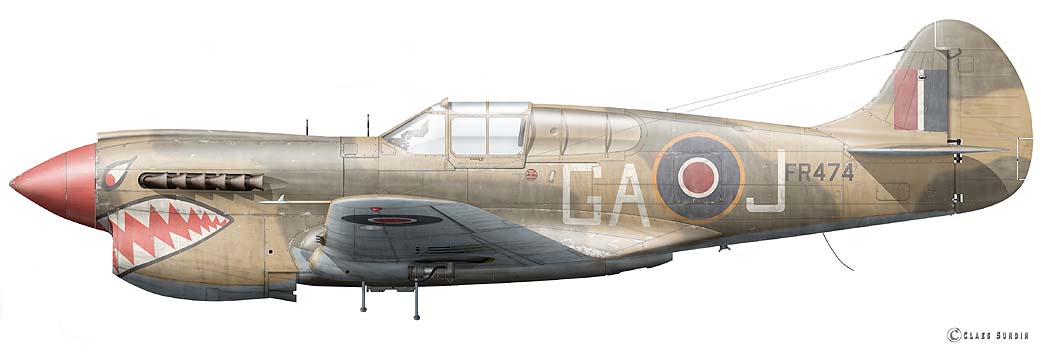



|
When Bernard Law Montgomery commented his offensive, Operation Lightfoot the German Jagdwaffe was at least on paper a strong force with an establishment of no less than 332 fighters, however due to the constant supply problems for the Africa Corps including the Luftwaffe in Africa there was 202 fighters on hand and of those just 107 was ready for action. On the other hand, the WDAF comprised by this time of 29 British, Australian and South African squadrons which, augmented by other Allied units, were able to offer overwhelming air support to the British 8th Army offensive at El Alamein. Although the Bf 109s of the Jagdwaffe were still superior, the WDAF was by now strengthened with seventy-eight Spitfires and a large numbers of P-40 Kittyhawk units that could contest the air. The day-bomber picture was also improved as B-25 Mitchells joined the Bostons, Baltimores and Wellingtons. JG 27 who manage to put up around 40 fighters on daily basis during the British offensive, would claim a total of 64 enemy fighters shot down for the loss of 24 Bf 109 in air combat. However from the start of the battle the number of mission flown by JG 27 declined steadily, from 69 mission on the 23 October to just 49 take-offs a couple of days later. On one of those days, on 28 October the III./JG 27 would claim two adversaires for the loss of two aircraft, Uffz. Erich Kranik, an ace with 12 Abshüsse would be KIA by Spitfires and Lt. Dr. Helmut Fenzl that was listed as POW, after battles with P-40s. The pilot who shot down Lt. Fenzl this day was a veteran from 112 Squadron, the Canadian P/O Gary Wright flying in his Kittyhawk "GA-J". In his own words: "I flew escort to Alamein Bulge - Top cover - jumped 4 Me 109s at Alamein - badly damaged one with burst - followed it down over lines, where clubbed in turn by A / A. - landed inside own lines - 109 confirmed by Army. 1 Me 109F destroyed ". Helmut Fenzl made a smooth belly landing in his crate "Weisse 7" behind enemy lines and was promptly taken prisoner, handing over a Bf 109 F-4 in a pristine condition to the British. P/O Wright was himself wounded in this action, ended the war as a F/Lt. with three confirmed destroyed Bf 109s, one probable Bf 109, one probable Me 210, one damaged Bf 109 and a shared destruction of a Ju 88. He had manage to logg 227.5 hrs on the Kittyhawk with a total of 160.15 operational hours. To sum up this battle from a German perspective, JG 27, JG 53 and JG 77 would from 23 October to 11 November, 19 days of fighting over El Alamein claim a total of 128 enemy fighters for an own loss of 37 Messerschmitts. Finally, although the battle of Stalingrad was far from the Middle East, the Germans struggle to overcome the Soviets stubborn and desperate defense was not immune to the impact of Eighth Army's victory at El Alamein, nor to the Operation TORCH invasion that commented at midnight on 7/8 November 1942. Despite their defeats on the Eastern Front, the Germans felt forced to transfer their Luftflotte II to Italy and Tunisia. As a consequence from 1-17 November, Eastern front as well as Western front Jagdwaffe units arrived in North Africa, including parts of JG 1, JG 2, JG 11, JG 51 and JG 77, 106 fighters in total. Please note that there is no fotos of Wrights Kittyhawk, the profile is therefore based on other 122 Sqn. P-40s from this period. |
|
|
|
|
|
|